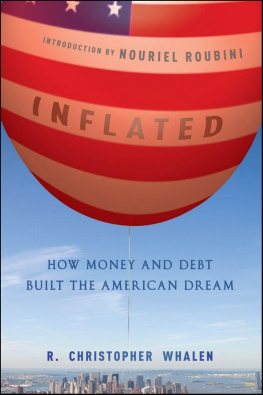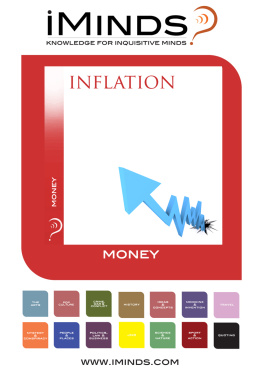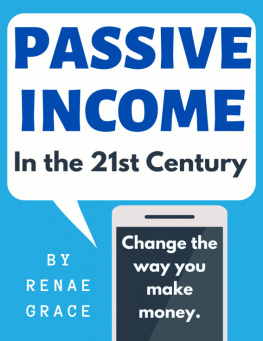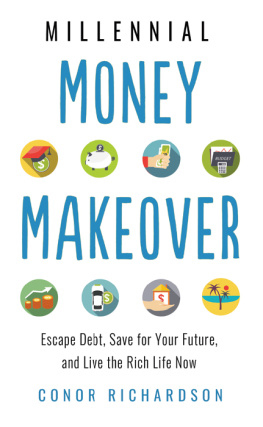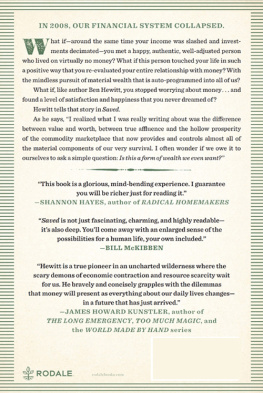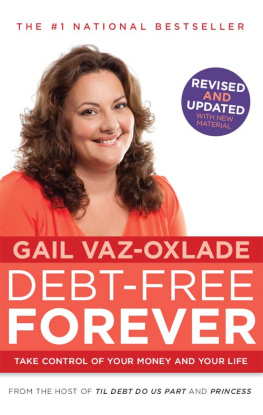Contents

Copyright 2011 by R. Christopher Whalen. All rights reserved.
Published by John Wiley & Sons, Inc., Hoboken, New Jersey.
Published simultaneously in Canada.
No part of this publication may be reproduced, stored in a retrieval system, or transmitted in any form or by any means, electronic, mechanical, photocopying, recording, scanning, or otherwise, except as permitted under Section 107 or 108 of the 1976 United States Copyright Act, without either the prior written permission of the Publisher, or authorization through payment of the appropriate per-copy fee to the Copyright Clearance Center, Inc., 222 Rosewood Drive, Danvers, MA 01923, (978) 750-8400, fax (978) 646-8600, or on the Web at www.copyright.com . Requests to the Publisher for permission should be addressed to the Permissions Department, John Wiley & Sons, Inc., 111 River Street, Hoboken, NJ 07030, (201) 748-6011, fax (201) 748-6008, or online at www.wiley.com/go/permissions .
Limit of Liability/Disclaimer of Warranty: While the publisher and author have used their best efforts in preparing this book, they make no representations or warranties with respect to the accuracy or completeness of the contents of this book and specifically disclaim any implied warranties of merchantability or fitness for a particular purpose. No warranty may be created or extended by sales representatives or written sales materials. The advice and strategies contained herein may not be suitable for your situation. You should consult with a professional where appropriate. Neither the publisher nor author shall be liable for any loss of profit or any other commercial damages, including but not limited to special, incidental, consequential, or other damages.
For general information on our other products and services or for technical support, please contact our Customer Care Department within the United States at (800) 762-2974, outside the United States at (317) 572-3993 or fax (317) 572-4002.
Wiley also publishes its books in a variety of electronic formats. Some content that appears in print may not be available in electronic books. For more information about Wiley products, visit our web site at www.wiley.com .
Library of Congress Cataloging-in-Publication Data:
Whalen, R. Christopher, 1959
Inflated: how money and debt built the American dream / R. Christopher Whalen.
p. cm.
Includes index.
ISBN 978-0-470-87514-8 (hardback); 978-0-470-93371-8 (ebk); 978-0-470-93370-1 (ebk)
1. Debts, PublicUnited States. 2. Inflation (Finance)United States. 3. MoneyUnited StatesHistory. 4. Monetary policyUnited StatesHistory. I. Title.
HJ8101.W43 2010
332.10973dc22
2010028553
For Pamela
Voici mon secret. Il est trs simple: on ne voit bien quavec le cur. Lessentiel est invisible pour les yeux .
Antoine de Saint Exupry, Le Petite Prince (1943)
I do not think it is an exaggeration to say that it is wholly impossible for a central bank subject to political control, or even exposed to serious political pressure, to regulate the quantity of money in a way conducive to a smoothly functioning market order. A good money, like good law, must operate without regard to the effect that decisions of the issuer will have on known groups or individuals. A benevolent dictator might conceivably disregard these effects; no democratic government dependent on a number of special interests can possibly do so.
F. A. Hayek
Denationalization of Money,
Institute of Economic Affairs (1978)
Preface
What is the American dream? The historian and Pulitzer Prize winning author of The Epic of America , James Truslow Adams, is recognized as the first American to define the concept:
The American Dream is that dream of a land in which life should be better and richer and fuller for everyone, with opportunity for each according to ability or achievement. It is a difficult dream for the European upper classes to interpret adequately, and too many of us ourselves have grown weary and mistrustful of it. It is not a dream of motor cars and high wages merely, but a dream of social order in which each man and each woman shall be able to attain to the fullest stature of which they are innately capable, and be recognized by others for what they are, regardless of the fortuitous circumstances of birth or position.
Adamss observation was as much a reflection on the nations past as it was asking about its future. Adams published his book, Epic of America , in 1931 during the Great Depression. His world view was more egalitarian and libertarian than the corporate perspective, which today governs much of American life. Adams expressed hope for a world that was not merely defined by commercial standards but comprised of a society where individuals were free to pursue their own definitions of liberty and success.
In the twentieth century, the concept of the American dream can be said to trace its roots back to the promise of life, liberty and the pursuit of happiness, the most famous line in the Declaration of Independence. Simply stated, when the immigrants who built the United States came to this country, they expected to be able to achieve a level of personal freedom and material security that was substantially better than that which was available in other nations of the world. Todays Americans as well as the thousands of immigrants who come to the United States each year still have that same promise in mind.
Americans as a whole view themselves as reasonably prudent and sober people when it comes to matters of money, though the choices we make at the ballot box seem to be at odds with that self image. As a nation we seem to feel entitled to a national agenda and standard of living that is beyond our current income, a tendency that goes back to the earliest days of the United States. This book examines this apparent conflict by reviewing our nations past from a political and financial perspective, with an emphasis on the portions of the narrative prior to the decade of boom and bust.
Events such as the Gold Rush of the 1840s, the Civil War, the creation of the Federal Reserve System, and the two World Wars, are examined in the context of the changing definition of the aspirations of a nation. Whether taming the frontier in the 1800s, fighting poverty in the 1930s or bailing out private banks and corporations in the twenty-first century, successive American governments turned debt and inflation into virtues in order to make ends meet, a choice not unlike that made by leaders in many other nations of the world. But Americans have taken the tendency to borrow from the future to an extreme and in the process made it a core ethic of our society. In pursuing the American dream today without limitation, we have made our tomorrows less certain.
The rejection of any practical limits on expenditure is a view particularly encouraged by the generations of Americans that have come since WWII and the subsequent half century of Cold War. By virtue of the sacrifices of the past, Americans believe that we are somehow exempted from the laws of gravity as regards finance and economics. We speak of our special role in the global economy even as we repeat the mistakes of Great Britain, Rome, and other ancient civilizations whose financial systems have come and gone. The same popular delusions about inflation and debt that have affected societies in the past are also present in America today.
By highlighting the work of some of the great economists, historians, and researchers of the past two centuries, Ive attempted to tell the unique American story of money and debt from a laymans perspective. And by describing the use of the printing press and credit as enduring features of the American dream, the story of a nation that is just two centuries old, I hope to illuminate these issues and thereby encourage a broader national discussion about the future of Americas political economy and our place in the world.

